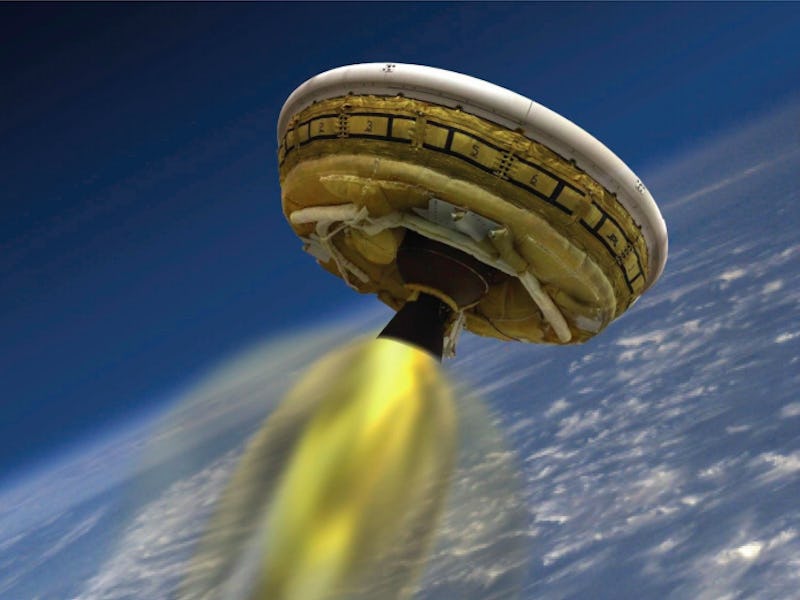NASA Tested a Supersonic Mars Lander Today
The Low Density Supersonic Decelerator's cushion technology will make red planet landings smooth sailing.

While you were glued to your computer today as Apple shilled its next something or other, NASA was live-streamed its tests for a way for spacecraft to land on Mars. Watch that, watch-watchers.
The [Low Density Supersonic Decelerator](http://www.nasa.gov/mission_pages/tdm/ldsd/index.html (LDSD) was launched today from the U.S. Navy Pacific Missile Range Facility in Kauai, Hawaii after days of weather delays. Its main purpose was to test out braking technologies for potential manned Mars missions and to deliver larger payloads for other potential planets and atmospheres we may one day visit.
Most current braking methods rely mainly on gravity and parachutes to slow descents. That's Earth thinking, by Earth people, and it won't work everywhere. Mars doesn't have a lot of gravity but it also doesn't have much air to wrap a parachute around. The LDSD’s flying saucer-shaped balloon and parachute combo will hopefully make manned descents saferby increasing surface area and creating drag during descents.
For the test, the craft is supposed to be lifted to about 120,000 feet via a massive weather balloon big enough to fill the Rose Bowl, after which it will be cut loose and a rocket engine will shoot it up to 180,000 feet above the earth at the edge of the planet’s stratosphere.
The LDSD’s rapid ascent is actually a bit of a switcheroo. By being launched upwards at a supersonic rate it will potentially match speeds a similar craft would experience while descending to Mars. Once it hits Mach 3 the saucer-shaped craft will deploy another balloon whose primary purpose is to mimic the Martian decent and cushion the craft enough to slow it down.
To ease things up the craft down further and to send it back down towards earth, a supersonic parachute (the world's largest) will then deploy, allowing it to float to a smooth landing in the Pacific.
All systems are go, and the LDSD’s drop is scheduled for 5:30 EST. We’ll keep you posted on the outcome of the LDSD’s test flight as it develops.